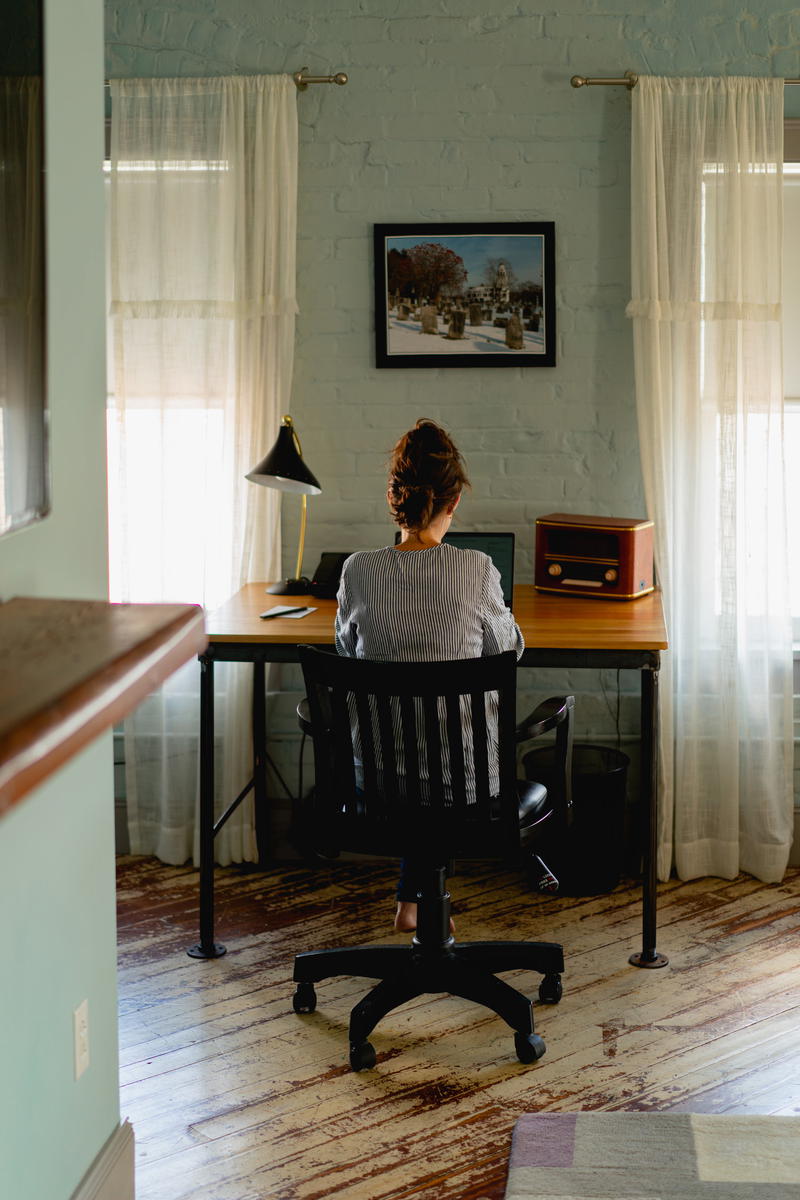Remote vs Hybrid vs In-Office Work (How to Choose?)
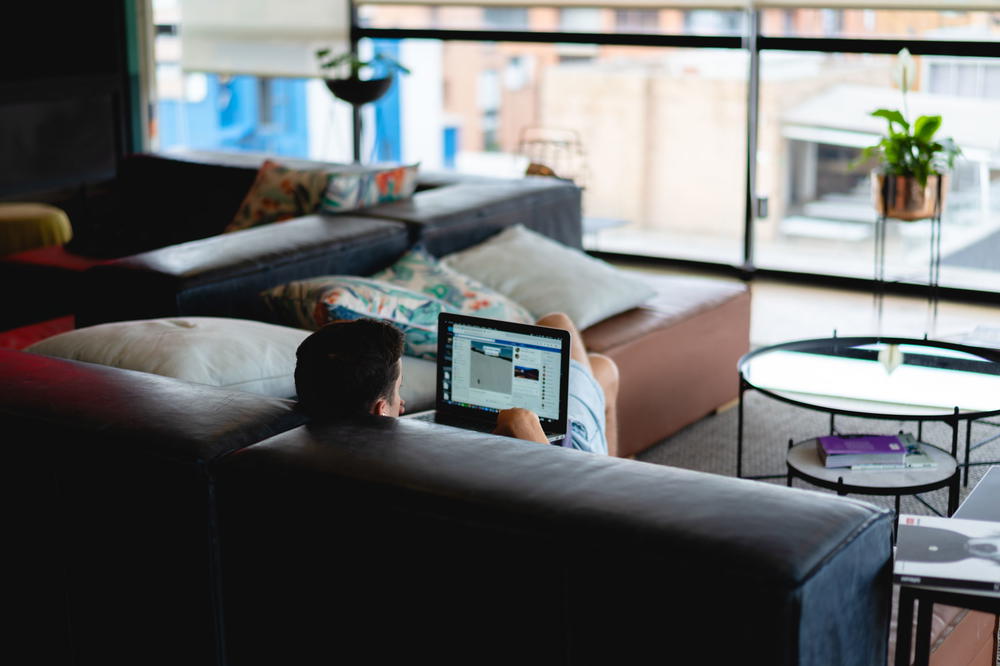
What should you consider before choosing among working from home, hybrid model and going into an office? We list our personal experience, with benefits and downsides of each.
This article may contain affiliate links. We earn a small commissions when you purchase via those links — and it's free for you. It's only us (Becca & Dan) working on this website, so we value your support! Read our privacy policy and learn more about us.
Let’s flash back to the early days of 2020 when the idea of remote work was new and novel.
Companies were offering home office money that you could use to spruce up your work-from-home setup. Most of us thought we’d go back into the office in no time, and didn’t realize we were probably going to be working from home for the next year or so.
The “next year or so” is key here, as many of us in the world, including both of us, eventually did get “called back into the office.” It wasn’t five days a week, but it was two or three, or we negotiated it to be optional.
These days, lots of professionals are in this middle ground of “hybrid work,” or work remotely completely, or are back in the office full-time. We find that among our friends, they fall into one of these categories.
In this article, I’ll explore the pros and cons of each option for how to be splitting time working from home or in the office, or just one of these, or both. You’ll learn from our personal experiences about each style of work!

Remote Work
After seeing Dan’s story and experience with going “back to remote,” he has learned a lot that he has shared with me.
With choosing to be a remote employee, he has concluded that to be effective as a remote employee, the company culture needs to support flexibility. You don’t want to feel like a prisoner in your own home because of your job. If you’re looking for a new remote job, you can ask about flexible work hours, the collaboration style and the general company culture.
The questions you ask should be direct with your expectations. For me and Dan, we both enjoy trading time during the day for an hour or so in the AM or an hour or so in the PM. A no-questions-asked one-hour break at 2:30pm to go to the dentist without permission is well worth the hour of catch-up later that night.

The benefits of choosing to be a remote employee
We talk a lot about the advantages of working from home, and there are quite a few. The main benefits might differ from person to person based on the specifics of every job.
Flexibility in schedule
Like we said above, working remotely allows us to sometimes have an appointment during the day, and make up the work later that night when we have time. Of course, this is not how it works for every remote employee, but it’s an advantage. When our daughter starts daycare, working remotely will allow us to drop her off and pick her up. If we weren’t around to do this, we don’t know what we’d do!
Additional family time or time for hobbies
When you slash the commute from your day, you can spend more time with your housemates, friends, family members or kids. For people who spend three hours round-trip commuting, it kills off time when you’d typically go to the gym, play outside with your kids or go to a cool workout class with a friend.
Money saved by not commuting
When we talk about the money you can save by working remotely, we’re serious. There are no temptations to buy a $16 salad at Sweetgreen when you work from your living room. You also save on gas, tolls, train fares or bus fares if you don’t commute.
Flexibility of where you work
Maybe you can take your laptop to the couch (not great for your neck and back, but we’ve done it). Or, you can go to the social room in your apartment building to work on some emails. Maybe you’re freelancing and you want to work remotely and travel. All these are benefits of when you’re a remote employee.
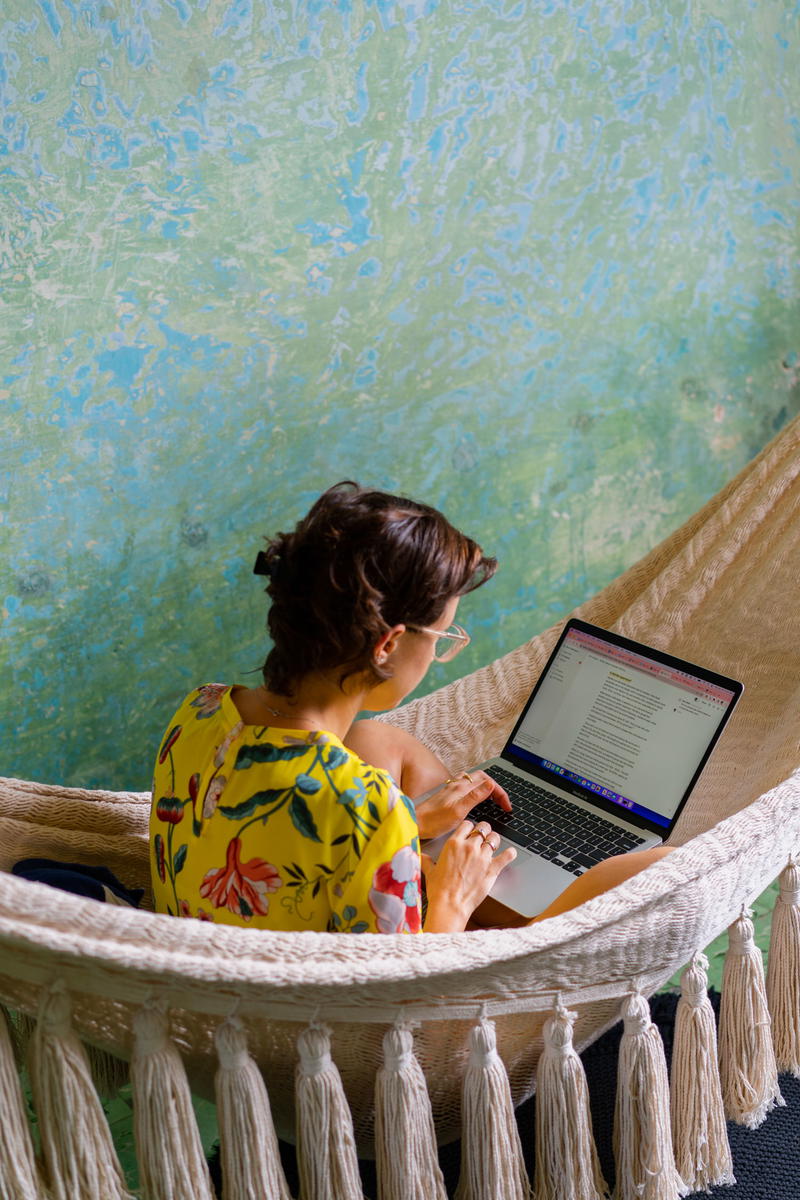
The downsides of being a remote employee
There are downsides, too. Here are a few examples of disadvantages of being a remote employee that we’ve found.
The fear of missing out
There have been times when I’ve been working remotely and I find out that all my coworkers who were in the office that day went out to celebrate something, and I got left out. It’s not a good feeling. It’s times like those when I “sort of” wish I had been in the office with my whole team that day.
Not being “seen”
At the company I worked at for many years before I went remote, the remote employees were kind of forgotten about because the majority of the staff worked at the office. Things are different now, but if you find yourself to be the singled-out remote employee, there is much less empathy for your situation and working experience.
Feeling isolated
If you thrive on interpersonal interaction, then working remotely on your own may get stale. I sometimes felt like this if I was working from home, alone, and if Dan went into the office for something. I felt pretty bored and lonely if I wasn’t in a meeting. You have to go an extra mile to stay connected and communicate with other people.

Hybrid Work
Hybrid work, in theory, takes the best of both worlds. It’s one of the biggest trends in remote work this year, even though it combines the exact opposite of remote work as well!
On one hand, you get the freedom of working from home. On the other hand, you get to visit the office, have in-person meetings and (hopefully) get to eat some free food.
Some offices instituted some form of hoteling, where only a certain amount of people come in to the office at a time. This is unfortunate if the people who are not in the office are the same people you might want to have in-person meetings with.
Hybrid work also takes the best of both worlds if there’s a directive from your company’s leadership team to boost in-office participation. Some companies enforce hybrid time, and other companies are a little more flexible.

For Dan, he was technically hybrid for one year at his job that he started in May of 2021. The expectation was to go into the office once or twice per week. This was absolutely not tracked and he was instructed to only go into the office if it made sense.
The times that he went in were mostly to join bigger team events or to have longer collaboration sessions with coworkers.
If you have a long meeting, three hours on Zoom is absolutely debilitating, whereas three hours in person is more manageable — at least from our experience, that is.
The option to be close to the office is key. For Dan, going into the office takes about an hour, door to door. It’s not too bad. Anything over that amount of time would be way too far. We always talk about how some people used to commute over 1.5 hours per day, five times a week, before they went remote. Commutes quite a time suck!
With hybrid office participation being like a half-half (get it?), every pro and every con has the exact flip side, too.
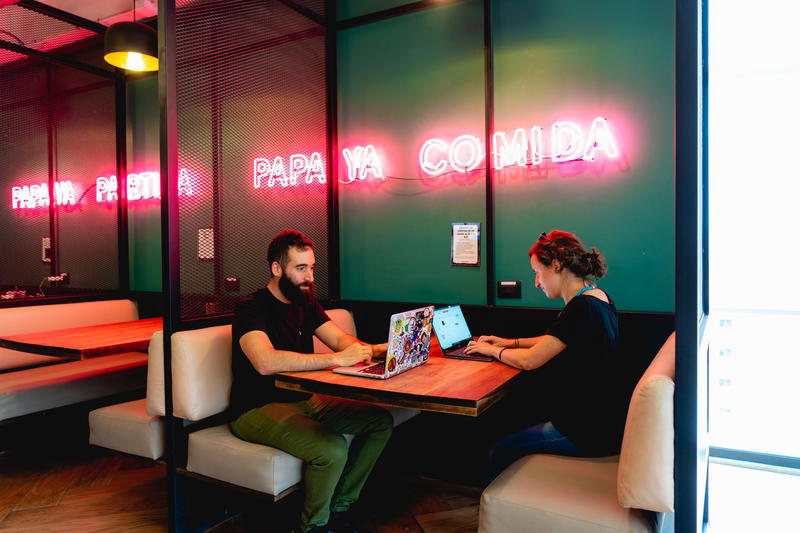
The benefits of being a hybrid employee
We think being a hybrid employee has a wide range of benefits. It makes going into the office feel like part of the week. Many offices have “hybrid days” on Tuesday, Wednesday and Thursday, or two of these three, with the bookend days of Monday and Friday for “work from home.”
Interpersonal interaction, and “me time”
Being a hybrid employee lets you balance the overload of “everyone in the office” three days a week with the solitude and “me time” you might like at home, in your home office space.

Getting out of the work-from-home rut
For those who find working from home to be isolating, draining or leading to burnout, heading into the office a few times a week can certainly be refreshing! I reluctantly admit that when I went into the office two or three days a week in my company’s hybrid model, I always walked in with a smile, happy to see the coworkers I had only “seen” on Slack since the last Thursday.
Enjoying the perks of the office, half the week
“Perks” of the office can mean very different things, depending on the company you work for. Even between me and Dan, our most recent offices varied pretty greatly. For me, an office perk was the AC blasting so strongly that I had to wear a sweatshirt in summer. A perk for me was also that I got to bike to work, and I absolutely love biking! This got me off my couch and my chair, and I always got more steps and activity if I was in the office for a day.
Dan’s company has its perks at the office, too. They have a stocked office kitchen with food, snack bars, coffee and seltzer, and every time he goes into the office, he gets a meal credit to put in an order for a restaurant with a group.
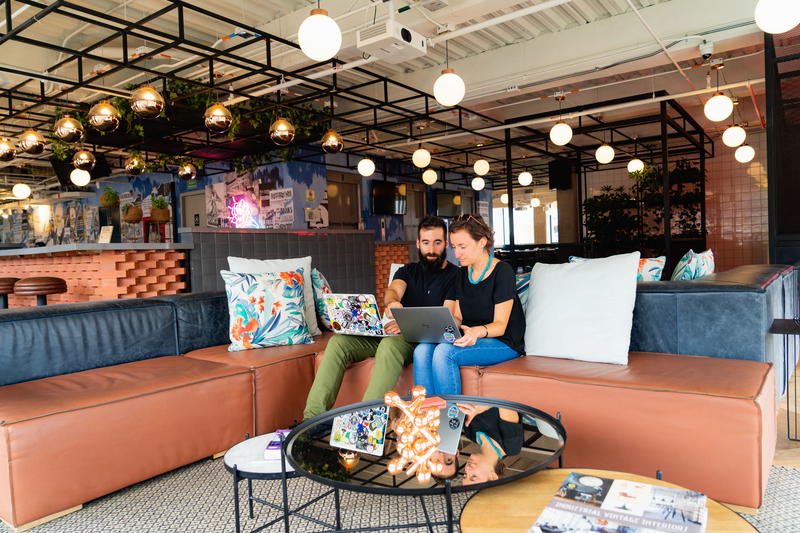
Disadvantages of being a hybrid employee
With hybrid employees not being quote remote and not quite being in the office “full time,” they are stuck somewhere in the middle. Check out these disadvantages we’ve thought of.
No dedicated desk
One of the major cons is that you might not have a dedicated desk with the hybrid option. If you want to have your desk set up the way you like it, and not have to adjust the screen and keyboard (and maybe even clean it every time), you’ll probably be out of luck.
You’ll likely be sharing a desk with someone coming in on another day.
A company I was working at last year used the app Robin for “reserving desks” before employees came in. Basically, every employee had to reserve a desk and there were no dedicated ones. One time, I reserved a desk and someone sat it in anyway. So, there are all these types of messes and frustrations that arise, especially if you have an urgent meeting to be at.
Limited space at the office
Depending on the size of your office and the floor plan, hybrid might be an option to downsize the office and there might not be room for everyone to come in on the same day. That can be one reason why you have to share a desk.
The term for this is called a hot desk. We’ve written about hot desks before! Check it out.
The other issue I have run into at both companies is all the phone booths being booked at meeting time. If I have to take a call with a vendor or client, and there are no phone booths or meeting rooms available, I have to quietly and awkwardly take the call at a hot desk or at a couch, and hope that someone doesn’t find me to be too loud.
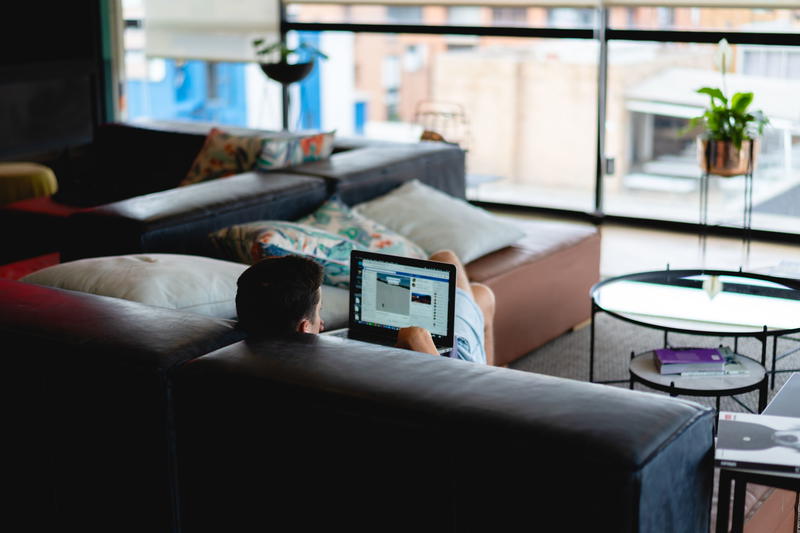
In-office work
With the company that Dan had the experience working in a hybrid capacity, the organization went through a transition in which all employees had to pick a ”status,” to simplify who was expected to be where. You could be classified as remote, hybrid or in-office.
The benefits of being an in-office employee is that you you get to claim a desk. For the previous hybrid employee that came in 4 or 5 days a week, this is huge! This person can keep personal items on their desk and they can refill their collection of ketchup packets, silverware and napkin (haha).
When you’re an in-office employee, you also have a sense of ownership over the workstation where you sit. It may be something minimal, but having a desk of your own feels like you belong in a small piece of that office. The inverse is being in a “hot desk,” which we describe in our guide to coworking spaces, which makes it feel like you’re always temporarily visiting.
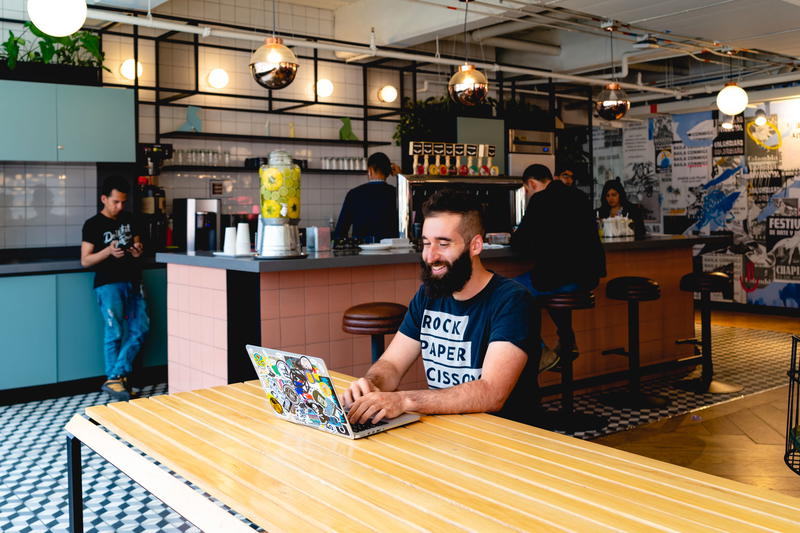
Benefits of coming into the office
Benefits of coming into the office every day are quite a few, if you live close by and you do your best work in a traditional office setting!
Separating work from home
Many people working remotely from home suffer from burnout. I certainly have gotten this way. When you work from home, your home is your office and your office is your home. It can be a struggle to shut the work laptop and get proper work-life balance. If you’re able to leave your work equipment at there office and avoid taking it home, that’s best for the mental load.
Interpersonal interaction
Working from home can be extremely isolating, especially if you live alone, or if your family or roommates are all out of the apartment during the day. Going into the office guarantees that you’ll be interacting with other humans. We need this!
Time to yourself during the commute
Pre-pandemic, I used to commute on the 2 or 3 train from Brooklyn to Herald Square in Manhattan, and I’d get an entire read of the Morning Brew newsletter plus a listen of the Daily podcast. This was my “me time.” I kind of miss it.
Engaging with leadership
If leadership is around the office and comes in every day, the employees who get face time and are able to socialize with the higher-ups are probably benefitting immensely.
Dedicated meeting spaces
If we have counted the times we have walked through each other’s meetings at home, we would be counting very high! Having dedicated conference rooms, phone booths or huddle rooms in the office create nice distraction-free spaces for meetings.
Office perks
Maybe there are great views of Manhattan, or a stocked pantry of snacks. Maybe the coffee machine is really fast and clean, and maybe you don’t like making coffees at home. Maybe it’s as simple as the AC and heat working really well, and saving you money off your home bills so that you don’t have to use these utilities during the week from 9 to 5!

Disadvantages of being in the office
Are there any downsides to being back in the office? Let’s take a look at what we’ve considered.
Being judged for when you’re at the desk
I found this to be one of the things I disliked about an office setting. If you weren’t at your desk, other employees seemed to wonder where you were and if you were goofing off.
Having to make small talk with higher-ups
This probably isn’t a bother for everyone, but if you’re new, or more junior, having to make chit-chat at the water cooler with leadership or senior execs (or being intimidated by them) can be awkward.
The commute
If your commute is draining, full of traffic, or expensive, then going into the office is not very beneficial for your sanity or budget, if your company is not compensating you for money spent on transport.
Which option is best?
Ultimately, this is up to you. If one of these options has already been given to you by your employer, we hope that our ideas about the benefits and downsides help you feel better about your situation.
Our experiences exploring all 3 options
By now, hopefully you’ve had a change to work remotely to understand the benefits and drawbacks. Between the two of us, we each have a different story and different experience that has allowed us to explore the benefits of remote work, hybrid work and in-office work.
Dan’s journey from in-office to remote, to hybrid
For Dan, his job in early 2020 was fully in the office. Everybody went home at the middle of March 2020 for a “two-week remote work trial period” when everything shut down. But soong there was an announcement that the office would never be re-opened.
For Dan, working remotely was a positive experience at that company because everyone was still able to be highly collaborative. There were plenty of productive brainstorming meetings and good work was able to be done.
Working remotely enabled a lot of flexibility, like getting a haircut in the afternoon, taking a long walk, grabbing a coffee and saving money by making lunch at home rather than eating out at an expensive downtown Manhattan lunch spot. What was more important was that the company culture supported the flexibility.
Work was measured on his output and his ability to deliver on objectives. Work was not measured by ant employee’s ability to “appear active” during 9 to 5.

My story of remote to hybrid, and back to remote
For me, I started 2020 working remotely as a freelancer. The office shutdowns didn’t affect me at all, except for the fact that I cycled through clients faster than ever as their budgets were affected by rapidly-changing budgets. By fall 2020, I scored a new full-time job and was hired as a 100% remote employee even though I lived a few subway stops from the (previous) office space.
By May 2021 there was an announcement that we could all meet in person. Then, it started to be encouraged that we could go to the office to be in person. The good news for me was that the office was two miles from my apartment, and I could bike there (I love biking!). There was no firm requirement on showing up yet, so I considered myself remote.
That is, until about summer and fall 2021 when the leadership decided it was best to really encourage everyone to be together and said employees should transition back to the office two to three days per week. I pretty much made that a part of my work week, until COVID got really bad in the winter and Dan and I coincidentally already had approved plans to work remotely from Merida, Mexico, for a month at a coworking space.
I came back and accepted the hybrid policy of two to three days per week in the office, and it was nice to see my colleagues as well as welcome new hires and form a company culture. We’d sometimes go out to happy hour nearby, and could have some meetings with vendors in person, and work out ideas in real time on white boards.
I now am working remotely again, as is Dan, after being allowed to choose that option. Luckily, our apartment building has a club room and a business center where we can work if we get tired of being at our home offices.
